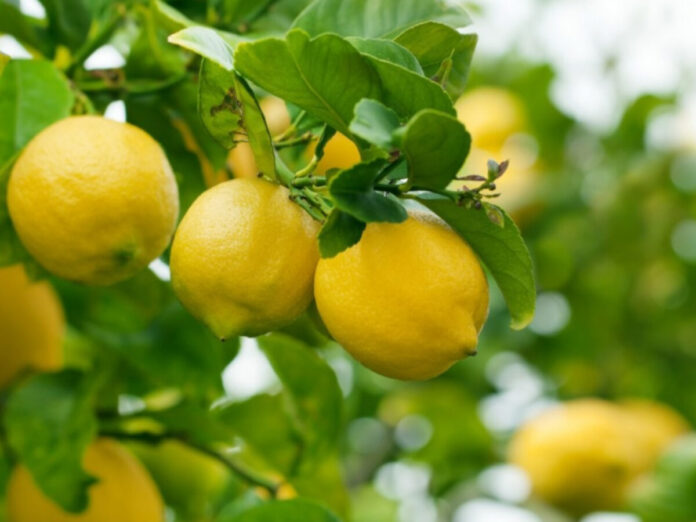Citrus Cultivation Guide for Nepal
Climate:
The best climatic condition suitable for Mandarin and Sweet orange is 1000-14000 masl with an annual average temperature of 19°c. for lime is 500-1000 masl, for Pumilo, is 400-1200 masl, for Kinnow 400-1000 masl with a mean annual temperature of 19°c, and Satsuma orange is 1500-1700 masl with 17-18°c. It has been reported that with an increase in altitude, the fruit of mandarin and orange becomes smaller, more acidic with thick skin while in relatively lower altitude; the fruit becomes sweeter with proper color development. Atmospheric humidity has a greater role in the physical characters of the fruits whereas temperature imparts on fruit quality. In general, low humidity favors seed color and external appearance whereas high humidity favors thin-skinned juicy fruits which are small in size but high in quality. Citrus is considered as a light-loving plant, in general, south-facing slopes get more sunlight than the north-facing slope, resulting in greater evaporation loss of moisture. It results in weak growth of citrus plant and fruit drop problem. Besides, less the source of irrigation is a problem in south-facing slopes. However, better quality fruit can be – produced if irrigation is adequately supplied in such cases. A heavy hot or cold wind is harmful to citrus orchards. Annual rainfall of 1250-1850 mm is sufficient for citrus cultivation.
Soil:
Citrus can grow well in a wide range of soils. For good performance, deep (2-3 m), well-drained, free of excess salt (i.e. less than 1000 ppm) with fair humus content is considered good. The soil has a pH value of less than 5.5 (best pH is 5.5-6) is not considered good for citrus cultivation.
Propagation:
Citrus trees are propagated both by seed and vegetative methods like grafting, budding, and layering. Most of the citrus species are poly-embryonic except Pumilo Seed propagation is still in vogue in lime and mandarin in certain areas. Budding is universally practiced in the case of sweet orange, grapefruit, air layering and even cutting in lemon and sweet lime. The seeds are extracted from the healthy, virus-free old tree. Seeds lose their viability very soon and should be sown within two weeks from the date of extraction from fruit several seedlings arise from each seed. Because of their difference in their growth, seedlings can be identified and rouged out. After 6-9 months, the seedlings are transplanting into a nursery bed at the spacing of 45-60 cm * 20-30 cm. The seedlings become ready for budding and about a year. Budding is generally done either in spring or in August or September.
Irrigation:
The citrus tree is sensitive to moisture stress during the period of rapid growth, flowering, fruit set, and fruit development. As a rule, citrus fruit kept moist but not wet to a depth of 1 m.
Weed control:
Eradication of weed is essential at any time of year. For Nepalese conditions, cutting, burning, hand, and mechanical weeding, raising inter crop, and chemical control can be practiced. The most commonly used herbicides in citrus are Monuron, Diuron, Simazine, Bromacil.
Inter-cropping:
The inter-crop should be shallow-rooted, short duration should have good canopy cover to protect soil from erosion, profit yielding, and non-soil depleting types and inter-cropping should be done in the early years of the orchard establishment. Crops like onion, chili, potato, soybean, cabbage, can be grown as safe inter-crops.
Training and pruning:
Training is to give the desired shape and strong framework and aids in securing good quality fruits over a long period. The training should start right from the time of scion-bud sprouts and should be complicated within 3 years of planting. The modified center leader is well suited for citrus trees. Training in the nursery consists of the staking the scion shoot to get a straight stem of about 75 cm length, removal of stock sprouts and side buds on the shoots, and finally heading back at the height of 75 cm from the ground and allowing 3-6 well-shaped shoots to develop at 7-10 cm apart on the upper portion of scion shoot. If the plants are not headed back in nursery, they may be cut back leaving about 75 cm strength to encourage the lateral branches, particularly on the upper portion. Then, up. vigor and growth of the tree, 4-6 properly placed branches are allowed to remain to form the main framework of the three heads. An ideal citrus tree should be low headed with the almost globular periphery, Como o, and with foliage extending to the crown Pruning to maintain the framework and to secure higher yields of better quanta year of bearing tree is essential. Removal of water shoots, stock sprouts dead, and diseased wood is necessary regularly. All the crisscrossing branches in the center of the tree should be removed. The best for pruning the bearing tree is after the harvesting of the bus during late winter or early spring when they are in the dormant stage.
Harvesting:
Being non-climacteric, the citrus fruits fail to ripen and improve in taste after harvest. So the fruit should be harvested only when they are fully ripe.
- Minimum colors break on the fruit surface- when color breaks from green to green-yellow starts. But under high rainfall and warmer winter, the skin color doesn’t develop properly. In lower altitude, mandarin and sweet orange should be harvested at a 70-80% color development stage while in higher altitude at the full-color development stage.
- Balanced ratio between sugar and acid contents and sugar at its best. E.g. the sweet orange and mandarin should have at least 8% sugar at harvesting time. Better quality mandarin contains 13-14% sugar and 0.8-1% titrable acidity.
- Development of characteristics flavor and taste of the variety.
